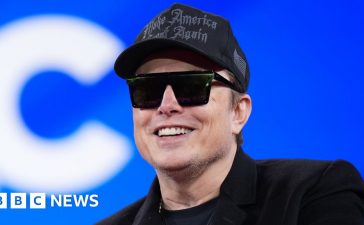Artificial intelligence is a driving force behind some of today’s most innovative business solutions. Companies are using it to revolutionize their customers’ experiences, develop better products, and boost brand awareness.
Business Insider’s series “CXO AI Playbook” has been exploring different use cases in depth, digging into various companies — with insight from their executives — that have leveraged AI to serve customers and develop better systems.
While some businesses are using AI for internal tasks such as hiring top talent, others are using it to improve products, services, and experiences that can strengthen their foothold in an industry. Still others are using AI to speed up certain processes: Liverpool Football Club, for example, has used AI to help it quickly post game highlights on social media.
As BI’s “CXO AI Playbook” series has unfolded, we’ve noticed certain technology initiatives are making waves and promising breakthroughs in crucial facets of business operations.
Here are 10 AI applications companies are embracing.
Automating customer service
Klarna
Application: AI-powered chatbots can assist far more customers than human agents can manage alone, freeing up employees to tackle more-challenging issues.
Example: Klarna, a Swedish company that offers a “buy now, pay later” service for online retailers, launched a customer-service AI assistant with OpenAI on its app in January. The assistant is designed to help customers manage their payment schedules and to answer queries.
Klarna said that in the assistant’s first month, it responded to two-thirds of Klarna’s customer-service chats — the equivalent work of 700 full-time agents. Since deployment, the company said, repeat inquiries have fallen by 25%, and issues have been resolved in less than two minutes, compared with 11 minutes previously.
Klarna estimated that the chatbot would boost profits by $40 million in 2024, though the company has not been profitable since 2019.
Sampling creative products
Wayfair
Application: Generative AI can help customers visualize how products and services would fit into their lives.
Example: Wayfair, an online furniture store, launched a generative-AI tool called Decorify to let shoppers virtually redesign their homes and test out furniture before they buy it.
Customers can upload an image of their space and choose an interior-design style, such as “modern farmhouse” or “industrial.” The tool then redesigns the space in that style using Wayfair products, which customers can then purchase.
Wayfair told Business Insider that the service was growing steadily without advertising and that engagement was high with increasingly long session lengths. The retailer affirmed that since Decorify’s launch last July shoppers have used the service to create over 150,000 designs.
Simplifying detail-heavy tasks
Citi
Application: Detail-intensive tasks like coding can become less tedious with AI tools that reduce needless repetition and speed up the process.
Example: Citi, the financial-services giant, made its GitHub Copilot tool available to a small group of its developers in 2023 as part of a pilot program. The generative-AI tool acts as a coding assistant, which Citi said makes it faster and easier to develop code and bring insurance and investment products to market.
The tool can help with tasks such as finding reusable code in the company’s repository. The technology is now available to almost 30,000 of Citi’s developers.
Managing warehouses
DHL Group
Application: Monitoring and staffing large industrial facilities day and night can be strenuous. AI robotics can help by tracking warehouse activities and performing tasks.
Example: DHL, a logistics-and-shipping company, worked with the robotics startup Robust.AI to develop a fleet of autonomous robots that can manage supply-chain tasks such as picking items from across a warehouse to fulfill a retail order.
The logistics company has several robot-related projects, including a pilot program for a robot called Carter, which is designed to use AI to learn and adapt to real-time warehouse conditions. The robot has optical sensors that collect data about the warehouse — including information about the layout, staffing, and inventory — as it performs its tasks. DHL hopes to use this data to make its warehouses more efficient.
Securing networks
BT Group
Application: Managing cyberattacks is challenging. AI modeling can help companies detect a threat and prevent a breach.
Example: BT, the UK telecommunications company, developed a cybersecurity platform called Eagle-i. This platform uses AI to detect cyberattacks and issue responses to prevent and mitigate hacks.
The platform, launched in 2021 and developed by researchers at BT Labs, uses the spread of infectious diseases in human populations as a model to train the AI platform to detect computer viruses as they spread through networks. The tool is also designed to predict the next stage of an attack to identify the best response. BT hopes the technology will protect its broadband customers from cyberattacks.
Developing products
Beiersdorf
Application: AI can help businesses find opportunities to enhance existing products or launch new ones.
Example: Beiersdorf, a German personal-care company, uses AI in its research-and-development process for skincare products. Its in-house team deploys predictive modeling to research interactions between skin and skincare ingredients.
Beiersdorf’s software is designed to predict how someone’s skin will age, such as where wrinkles will appear. The company says these insights have helped it identify innovative antiaging solutions. It also says it has used an AI platform to optimize product formulas to minimize the number of lab tests needed.
Monitoring perpetual systems
Picture Alliance/Getty Images
Application: Essential services require 24/7 oversight and immediate identification of breakdowns. AI-enabled systems can conduct consistent oversight and spot weaknesses.
Example: E.ON, a German utility company, uses AI to maintain its electricity infrastructure. It deploys semi-automated drones to monitor its power-transmission systems. AI software analyzes the drone images to assess whether any components, such as electrical cables and transmission towers, are defective.
The company is also testing an AI solution to predict when parts of its energy infrastructure, such as a cable, might need repairs. Executives hope that by detecting failures before they occur, they can prevent disruption. Victoria Ossadnik, E.ON’s chief operating officer for digital, told Business Insider that the company hoped to use AI “to accelerate the transformation of the energy sector.”
Targeting problems and solutions
Design Pics Editorial/Getty Images
Application: When problems are beneath the surface, it can be difficult to target the appropriate resources to fix them. AI can be deployed to calibrate the right response.
Example: John Deere, the maker of agriculture equipment, uses AI in its See & Spray product to help farmers reduce herbicide use and increase crop yields.
Crops compete with weeds for water, nutrients, and sunlight. In the past, farmers sprayed whole fields with herbicide to manage weeds. This meant they also sprayed crops and barren soil, wasting valuable resources and time.
The company uses computer vision and machine learning to detect individual weeds and apply herbicide only where it’s needed. It said this has reduced herbicide use by up to two-thirds.
A sprayer mounted on a tractor uses cameras and AI to identify a weed’s position as the tractor moves across a field. The sprayer’s nozzles then target only that weed with herbicide.
Improving health and safety
Suffolk Construction
Application: Keeping workers safe requires a deep understanding of risks. AI can help track and synthesize safety data, providing insights that could prevent accidents.
Example: Suffolk Construction, a Boston construction company, wanted to take a more data-centric approach to worker safety. Suffolk Technologies Group, a venture-capital group associated with the construction company, partnered with the startup NewMetrix to develop an AI-based safety tool. The team digitized incident data and developed a predictive model.
A key component was tracking “safety observations” — the term used for when the team is looking for circumstances that are not in line with safety protocols, such as someone not wearing appropriate protective clothing.
The data indicated that the frequency of safety observations was correlated with the total number of on-site safety incidents. As a result of this insight, the team directed the workers to conduct safety observations based on a formula derived from the total number of job hours worked.
The data-driven strategy was effective. Suffolk said that after implementing the approach, it saw a 25% improvement in the total recordable incident rate during the past fiscal year.
“Over the course of the last few years since we’ve provided more focus on observations, we’ve seen an overall downward trend closer to 60% in terms of incident rates,” a Suffolk spokesperson told BI.
Complying with regulations
Tetra Pak
Application: Many companies are sitting on years’ worth of valuable product-related data they don’t have the time or resources to mine for insights. AI can analyze this data and provide direction to improve decision-making.
Example: Tetra Pak, a Swiss food-packaging and -processing company, works with cheesemakers at several stages of the production process. Cheesemakers must meet certain requirements set out by the US Food and Drug Administration, such as those for moisture and fat content. The company uses AI to create optimal cheese recipes that meet these standards.
Todd Stertz, a manager for cheese and powders at Tetra Pak, said that while many cheese plants had “vast amounts of historical data,” the cheesemakers “did not always use it to the maximum potential.” For instance, the data could give insight into how certain manufacturing conditions in the past had affected things like cheese moisture.
“The vast amount of data is not easy for a human to digest,” Stertz said. “It takes a long time to come up with a decision afterwards.”











